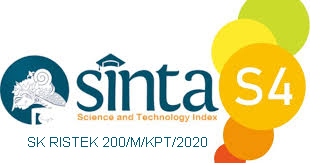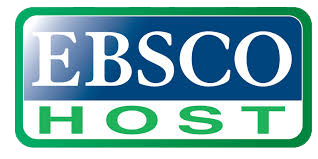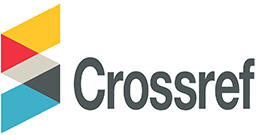Implementation Internet of Things for Feeding Catfish Water Quality Analysis Using Linear Regression and K-Nearest Neighbor
Abstract
Keywords
Full Text:
PDFReferences
Al-Dosary, N. M. N., Al-Hamed, S. A., & Aboukarima, A. M. (2019). K-NEAREST NEIGHBORS METHOD FOR PREDICTION OF FUEL CONSUMPTION IN TRACTOR-CHISEL PLOW SYSTEMS. Engenharia Agrícola, 39(6), 729–736.
Priyanka, G., Prakash, N., Kishore, A., & S, N. K. (2020). Smart IoT Based Fish Pond Monitoring System to Enhance Fish Cultivation. 29(5), 6408–6417.
Guo, Y., Han, S., Li, Y., Zhang, C., & Bai, Y. (2018). K-Nearest Neighbor combined with guided filter for hyperspectral image classification. Procedia Computer Science, 129, 159–165. https://doi.org/10.1016/j.procs.2018.03.066
Hu, G., Yang, Z., Zhu, M., Huang, L., & Xiong, N. (2018). Automatic classification of insulator by combining k-nearest neighbor algorithm with multi-type feature for the Internet of Things. 1–10.
Fitriani, R., & Vitriani, Y. (2018). The Comparison of Linear Regression Method and K-Nearest Neighbors in Scholarship Recipient. 2018 19th IEEE/ACIS International Conference on Software Engineering, Artificial Intelligence, Networking and Parallel/Distributed Computing (SNPD), 194–199.
Arafat, A. I., Akter, T., Ahammed, F., Ali, Y., & Nahid, A. (2020). A dataset for internet of things based fish farm monitoring and notification system. Data in Brief, 33, 106457. https://doi.org/10.1016/j.dib.2020.106457
Wahla, A. H., Chen, L., Wang, Y., Chen, R., & Wu, F. (2019). Automatic wireless signal classification in multimedia Internet of Things: An adaptive boosting enabled approach. IEEE Access, 7, 160334–160344.
Wang, W., & Lu, Y. (2018). Analysis of the Mean Absolute Error (MAE) and the Root Mean Square Error (RMSE) in Assessing Rounding Model. IOP Conference Series: Materials Science and Engineering, 324(1). https://doi.org/10.1088/1757-899X/324/1/012049
Chai, T., & Draxler, R. R. (2014). Root mean square error (RMSE) or mean absolute error (MAE)?–Arguments against avoiding RMSE in the literature. Geoscientific Model Development, 7(3), 1247–1250.
Kang, S. (2021). K-nearest neighbor learning with graph neural networks. Mathematics, 9(8). https://doi.org/10.3390/math9080830
Guo, G., Wang, H., Bell, D., Bi, Y., & Greer, K. (2003). KNN model-based approach in classification. Lecture Notes in Computer Science (Including Subseries Lecture Notes in Artificial Intelligence and Lecture Notes in Bioinformatics), 2888(August), 986–996. https://doi.org/10.1007/978-3-540-39964-3_62
Kurniadi, D., Abdurachman, E., Warnars, H. L. H. S., & Suparta, W. (2018). The prediction of scholarship recipients in higher education using k-Nearest neighbor algorithm. IOP Conference Series: Materials Science and Engineering, 434(1). https://doi.org/10.1088/1757-899X/434/1/012039
Nababan, A. A., Sitompul, O. S., & Tulus. (2018). Attribute Weighting Based K-Nearest Neighbor Using Gain Ratio. Journal of Physics: Conference Series, 1007(1). https://doi.org/10.1088/1742-6596/1007/1/012007
Prasath, V. B. S., Alfeilat, H. A. A., Hassanat, A. B. A., Lasassmeh, O., Tarawneh, A. S., Alhasanat, M. B., & Salman, H. S. E. (2017). Distance and Similarity Measures Effect on the Performance of K-Nearest Neighbor Classifier -- A Review. 1–39. https://doi.org/10.1089/big.2018.0175
Taunk, K., De, S., Verma, S., & Swetapadma, A. (2019). A brief review of nearest neighbor algorithm for learning and classification. 2019 International Conference on Intelligent Computing and Control Systems (ICCS), 1255–1260.
DOI: https://doi.org/10.31326/jisa.v5i2.1431
Refbacks
- There are currently no refbacks.
Copyright (c) 2022 Yaddarabullah Yaddarabullah, Egie Hermawan

This work is licensed under a Creative Commons Attribution-ShareAlike 4.0 International License.
JOURNAL IDENTITY
Journal Name: JISA (Jurnal Informatika dan Sains)
e-ISSN: 2614-8404, p-ISSN: 2776-3234
Publisher: Program Studi Teknik Informatika Universitas Trilogi
Publication Schedule: June and December
Language: English
APC: The Journal Charges Fees for Publishing
Indexing: EBSCO , DOAJ, Google Scholar, Arsip Relawan Jurnal Indonesia, Directory of Research Journals Indexing, Index Copernicus International, PKP Index, Science and Technology Index (SINTA, S4) , Garuda Index
OAI address: http://trilogi.ac.id/journal/ks/index.php/JISA/oai
Contact: jisa@trilogi.ac.id
Sponsored by: DOI – Digital Object Identifier Crossref, Universitas Trilogi
In Collaboration With: Indonesian Artificial Intelligent Ecosystem(IAIE), Relawan Jurnal Indonesia, Jurnal Teknologi dan Sistem Komputer (JTSiskom)
JISA (Jurnal Informatika dan Sains) is Published by Program Studi Teknik Informatika, Universitas Trilogi under Creative Commons Attribution-ShareAlike 4.0 International License.


















